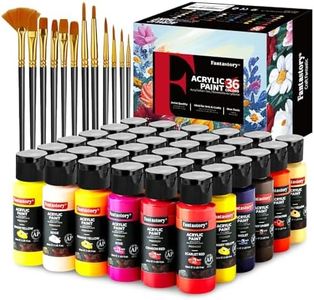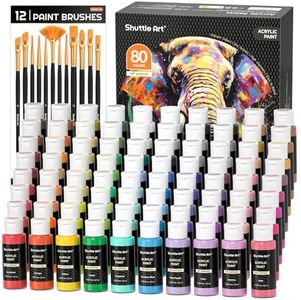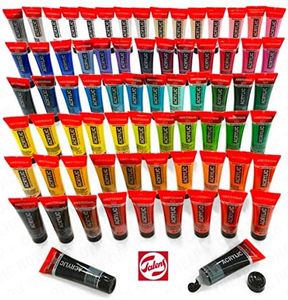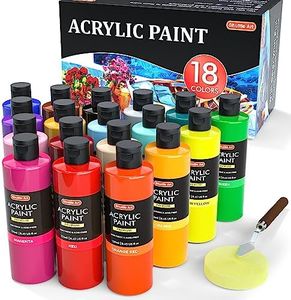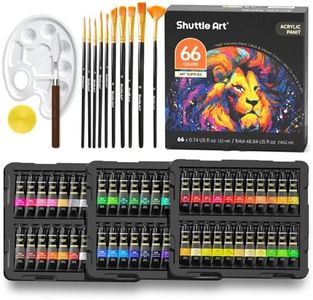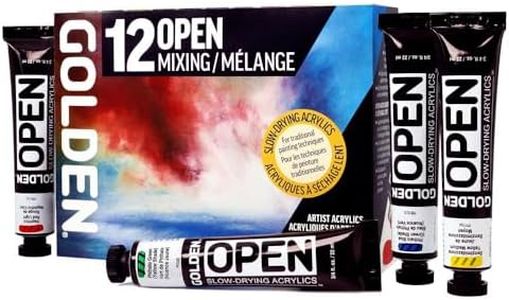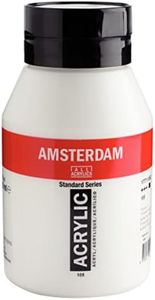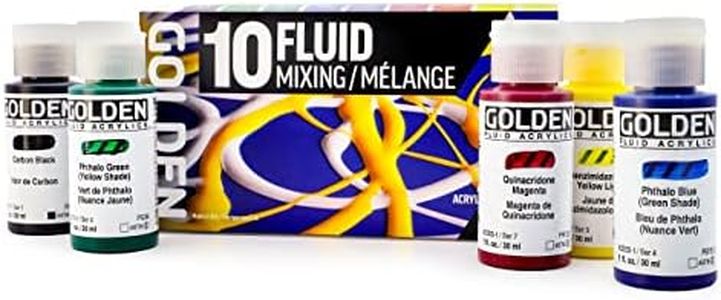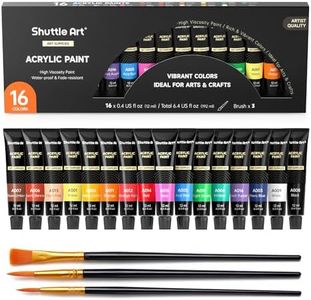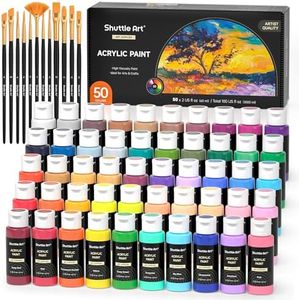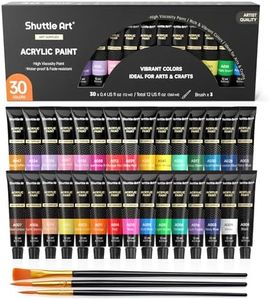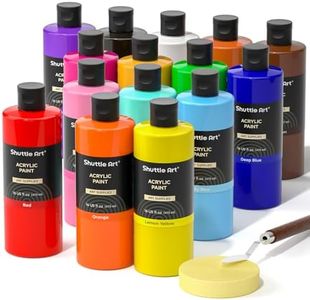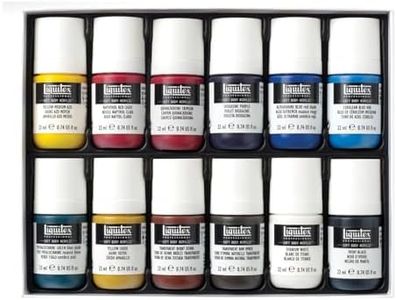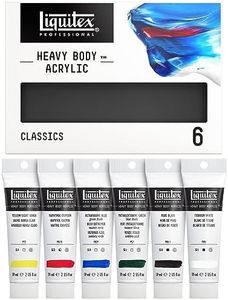We Use CookiesWe use cookies to enhance the security, performance,
functionality and for analytical and promotional activities. By continuing to browse this site you
are agreeing to our privacy policy
10 Best Acrylic Paints
From leading brands and best sellers available on the web.Buying Guide for the Best Acrylic Paints
Choosing the right acrylic paints can make a big difference in how your artwork turns out and how enjoyable the painting process is for you. Acrylic paints are loved for their fast drying time, ease of use, and versatility. When picking acrylic paints, it's important to understand the key features that affect the appearance, texture, and longevity of your paintings. Think about your own style, the kind of surfaces you want to paint on, and whether you're a beginner or looking for professional results. By paying attention to some main specifications, you can find paints that suit your needs and help bring your creative ideas to life.Pigment QualityPigment quality refers to the type and amount of colorant used in the paint. Higher quality pigments provide richer, more vibrant and consistent colors, and tend to last longer without fading. Student-grade paints use more fillers and less pigment, making them less bright but more affordable, while artist- or professional-grade paints offer maximum color punch and lightfastness. If you’re just starting or practicing, student-grade paints are often good enough, but for pieces you want to display or sell, choosing artist-grade pigments will ensure better color results and durability.
ViscosityViscosity is a fancy word for how thick or runny the paint feels. Heavy body paints are thick and hold brush marks, ideal for textured and bold applications, while soft body or fluid paints are smoother and flow better, perfect for detailed work, pouring, or watercolor-like effects. Choose heavy body if you like impasto or textured work, or go for soft/fluid viscosity if you want smooth coverage or plan to mix easily with mediums.
OpacityOpacity describes how well the paint covers the surface beneath it. Opaque paints cover underlying layers quickly, while transparent paints let underlying colors or textures show through. Most acrylic paints label their opacity. Pick more opaque paints if you like solid, bold layers or are painting over darker surfaces, but opt for more transparent paints if you want to create layering or glazing effects, or allow previous layers to shine through.
LightfastnessLightfastness means how well the paint color resists fading when exposed to light over time. Paints with a high lightfast rating will maintain color longer, important if you want your artwork to last for years, especially when displayed in light. Look for paints marked as 'lightfast' if you are making work for sale or display, but this may be less important if you’re experimenting or just practicing.
Drying TimeDrying time is how quickly the paint sets after it’s applied. Acrylics generally dry fast compared to other paints, which can help you add layers quickly but might be tricky if you want to blend colors on the canvas. Some paints dry very fast (a few minutes), while others designed to stay workable longer give you more time for blending. Decide if you want fast results for quick projects or slower-drying options for techniques that require blending and longer working time.
Finish (Gloss, Satin, Matte)The finish describes the final look of the dry paint—whether it is shiny (gloss), somewhere in between (satin), or dull (matte). Glossy finishes can make colors pop and look very modern, while matte finishes have a more muted, classic feel. Satin provides a balance between the two. Pick a finish that matches your artistic style or the mood you want in your artwork, knowing that it also affects how dust and marks show on the painting.
